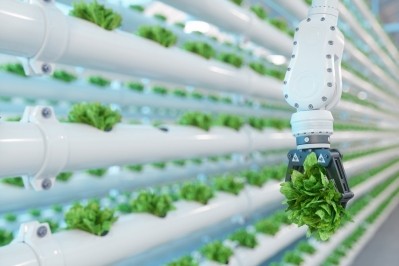[Video] Using data, IoT to unlock retail efficiencies, Wiliot exec shares perspective
“One of the things that I saw starting to happen at the end of COVID ... is the need for more accurate data than ever, especially with understanding where your merchandise is at. So, we're now in an omnichannel retail world where pretty much if you want to be competitive, you have to have some sort of buy online, fulfill in store, [and] ... any of those systems require you have super accurate data. And unfortunately, retail systems just weren't built for that level of accuracy.”
In pursuit of the perfectly stocked shelf
By combining a small IoT tag that costs 10 cents with Wiliot's data technology, stakeholders across the supply chain can access a host of data to help reduce waste and ensure retailers are providing perfectly stocked shelf for their customers, Segura said.
“What IoT brings for retailers in general is that you can get really precise data on what you have basically for free without additional labor costs, which is obviously, a very relevant concern today as well. For groceries specifically, the new technologies can do a lot of things around freshness.”
Wiliot’s IoT device can track when a product dips to an unsafe temperature or reaches to high of a temperature, Segura said. For example, Wiliot users have “seen Halloween candy hit 120 degrees in the back of a truck,” and “bananas go ...10-15 degrees below freezing,” he added.
IoT sensors and data also can help retailers and grocers ensure products are stocked in a timely fashion, Segura said. And while supply chain issues have been common since COVID, sometimes the hardest part of getting product on the shelf isn’t in transporting it across the country but moving it from the backroom to the store shelf, he admitted.
“It starts with visibility. One of the things we see is that even if your prediction is 100% accurate, you get the perfect amount to the store. You don't always get the perfect amount on the shelf. It's shocking to see how much merchandise, once you have the data, that makes it in the back door on the right day, right time within hours," Segura said. "It traveled thousands of miles, but then they can't get the last 100 yards to the shelf.”
IoT devices and data systems have advanced to a point that they're cheaper, and store managers and operators have the data at their fingertips to make changes to save money and prevent waste, Segura said.
“I think that we're going to start to see technologies that really democratize data, so that you can have a store manager interact with the data in a way that data scientists would, just like the way you type into ChatGPT and get your answer back. I think you'll start to have store managers be able to query that data through common language and make really intelligent decisions that before they wouldn't have been able to without like a degree in computer science.”
But where do grocers and retailers begin?
Though IoT can address several key operational challenges for grocers, smaller or more regional retailers might feel intimidated by the IT overhaul to ensure that they maximize data, and like consumers, they are stretching their dollar in the face of economic uncertainty.
The price of IoT devices have come down significantly – to 10 cents a sensor in the case of Wiliot – and the insight gained from the technology can pay for itself in operational efficiencies, Segura said. “What we've seen is the Internet of expensive things up until now, where I can go downstairs and my microwave has Wi-Fi, but I have no idea why. But what you're starting to see is the devices are getting so cheap," he added.
“You're not adding a $30 device to try to make something smart, and then trying to figure out how to power it. There are technologies now like ours, where they're passively powered through radio waves, and so you start to get completely different cost structures that makes these things feasible. So, for 10 cents, I can make a crate smart and then track the temperature and freshness of the cucumbers or the avocados that go into that crate forever, suddenly the economics make a lot of sense.”
For those organizations who might not know where to start when it comes to implementing new technologies and systems – whether that be IoT or AI - to improve store operations or omnichannel sales, Segura implored leaders to look for help and not go it alone.
"It's not just learning programming. It's also learning the cloud and data streaming and data engineering. So trying to do it all in-house is actually pretty difficult and takes a really long time. So I would just recommend [grocers] get help... There's plenty of people that are there happy to help out there."














